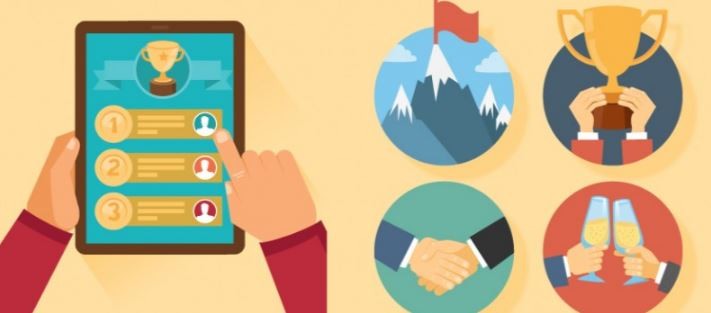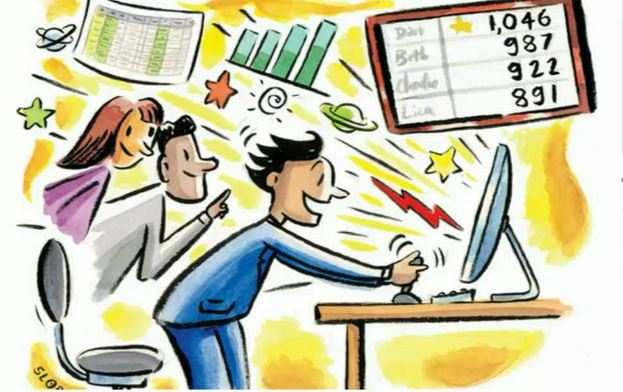
Continual play throughout our lives is beneficial for both the brain and body, as has been reported in study after study. It’s part of our nature to seek challenge, achievement, levels of success, and winning the prize. In business, this engagement with games and love of winning can come to your advantage in many ways.
Gamification uses elements of gaming, such as competition and winning, in a non-game context to improve productivity and engage “players.” It draws on our innately human desire towards status and achievement to help reach outside goals. Think parenting with stars, or points for prizes. Translated into business, the practice is being used to many ends, including encouraging engagement with a product or service, or boosting customer loyalty programs through reputation points and badges of achievement.
Over 70% of Global 2000 companies now use gamification
for marketing purposes and customer retention. (Source: Mashable)
Even though the concepts behind gamification are older than Mary Poppins’ spoonful of sugar itself, the word is fairly new. Early usage of the word dates back to 2002 to describe the work of computer programmer Nick Pelling. Although it didn’t really catch on until about 2010 when it began to be used to describe methods of incorporating reward aspects into software in ways that started to attract the attention of venture capitalists and Ted Talks alike.
Why Use Gamification in Your Business?
Gaming techniques have been proven to leverage people’s natural desires for mastery, competition, achievement, and status. One key way to use gamification to your company’s benefit is internally, to improve employee performance. When employees are awarded points that be can traded in for gift cards and other prizes, their performance starts to improve markedly. This is especially true when points are earned in a transparent and celebrated way within the work culture.
In his book, Stop Marketing, Be Remarkable, ReviewBuzz founder Mike Montano states, “Incentives are more than just a tool for motivating your team members. They provide the validation that winning customer reviews have a direct positive benefit. . . start with the dangling carrot of incentives.”
Montano says this of the way ReviewBuzz first employed gamification through a highly visible scoreboard to encourage employees to collect emails from customers, “By keeping score, this one method created immediate, dramatic improvements. It also led to healthy competition among the staff to push themselves to do better than their previous numbers and their colleagues.” Ultimately, he says, this approach manifested a culture of discipline, accountability, and empowerment.

How to Leverage Gamification in Your Business
To use gamification in your own business, you want to start by identifying key players. This means managers, leaders, and front line personnel. Engage key players who will inspire and influence the rest to the team to play to their full potential. This helps keep motivation alive.
A successful gamification system serves five purposes:
- Tracks and rewards efficient employees
- Tracks who is lagging
- Encourages competition
- Connects and engages employees
- Validates efforts publically
Be sure to award employees publically to create a sense of pride, and build momentum with a game-like experience such as raffle tickets, prize wheels, and non-cash rewards. A good place to look to maximize these techniques is company rallies. This kind of platform to celebrate accomplished goals also serves as a catalyst for the next round of competition.
From tracking systems to company rallies, gamification at the workplace can turn ordinary tasks into a fun and rewarding challenge. Incentives motivate and encourage, and the accolades and healthy competition that goes along with them provide validation that winning matters. Truly, for the business world, this is a win-win.
Images: Courtesy of pulselearning.com and Michael Sloan

